Fondata nel 1142 e situata nella conca coltivata a vigneti della Valle Isarco vicino a Bressanone (Bolzano), l’Abbazia non solo costituisce uno dei complessi architettonici più significativi dell’Alto Adige, ma si distingue anche come prominente Abbazia agostiniana del suo tempo. Come un piccolo villaggio autosufficiente, ogni edificio all’interno del complesso monastico ha svolto un ruolo specifico: le basiliche, le cappelle, i mulini, le botteghe, le cantine e le cascine rappresentavano un nucleo permanente, di cui solo una parte è stata adibita a museo.
Il progetto connota con nuove funzioni vecchi fabbricati e genera inaspettate connessioni tra le strutture ausiliarie e i corpi principali dell’Abbazia. Dall’esterno, l’ampliamento si rivela solo dal ponte rivestito in rame annerito che emerge dai tetti di un gruppo di edifici di servizio ristrutturati e collegati al nucleo dell’Abbazia al livello superiore.
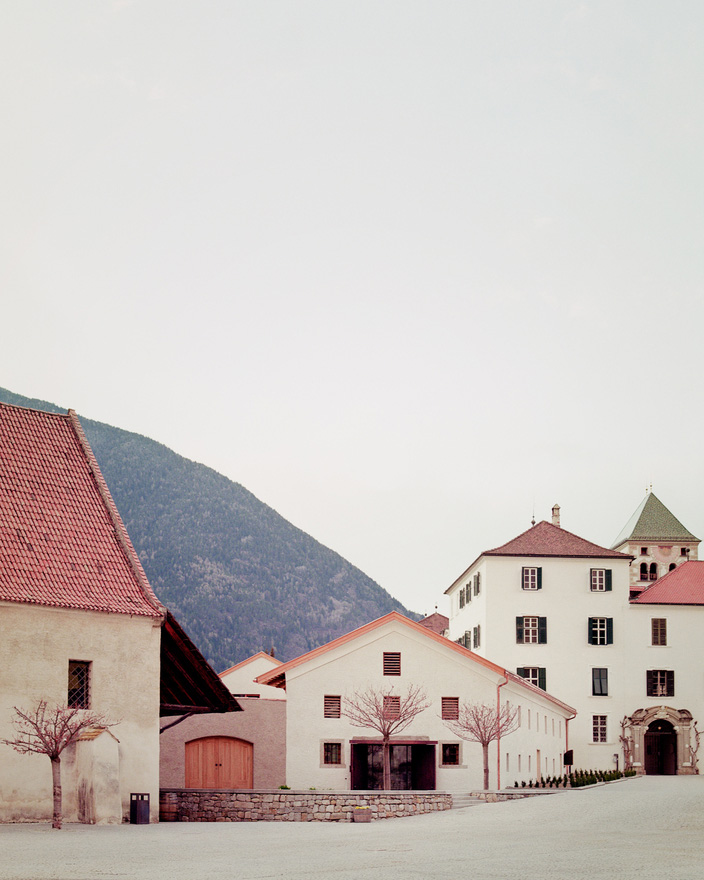
Photo: ©Simone Bossi.

Il progetto scandisce tre interventi distinti di demolizione, ristrutturazione e restauro riunendo le strutture secondarie esistenti in un unico sistema di percorsi collegandolo all’ala seicentesca della Biblioteca Abbaziale.
Il primo edificio, un ex magazzino agrario, è stato liberato di un solaio trasformandolo nell’ampio spazio a doppia altezza, nuovo atrio d’ingresso del museo mantenendo in parte il piano rialzato quale sala espositiva. Il secondo edificio, invece, sostituisce il vecchio lavatoio con una maestosa scala affiancata dalla torre dell’ascensore, divenendo elemento di connessione aerea con l’antica ala del chiostro. La terza e ultima struttura è stata ristrutturata per ospitare al piano terra uno spazio dedicato a seminari ed eventi che si affaccia su un cortile esterno di nuova configurazione e al livello superiore, uno spazio per mostre temporanee e una sala per il coro.

Photo: ©Simone Bossi.

Il nuovo atrio accoglie la biglietteria, le vetrine espositive e i grandi lampadari dagli elaborati dettagli in rame, legno e vetro che creano nuovi dialoghi tra i prominenti aggetti del tetto in capriate lignee restaurato e l’intonaco grezzo.
I visitatori escono dall’androne d’ingresso dirigendosi all’esterno per iniziare la loro visita al chiostro dell’Abbazia, il percorso si snoda all’interno del monastero, raggiungendo ai piani superiori la biblioteca settecentesca per discendere nuovamente all’ingresso che si riallaccia alla nuova aggiunta al livello superiore, alla sommità del vano scala. In questo modo il progetto è sia il punto di partenza che il punto di arrivo della sequenza museale. Completando la visita e attraversando le antiche mura dell’Abbazia nello spazio del nuovo ponte, una grande vetrata offre un affaccio visivo sul paesaggio: uno scorcio sul tetto dell’ex magazzino agrario ristrutturato che guarda verso la Cappella Sant’Angelo, offrendo viste privilegiate sul giardino recintato dell’Abbazia e sui vigneti al di là di esso.
Pareti in cemento bocciardato a vista, pavimenti in cemento spatolato e imponenti elementi in legno di castagno forniscono uno sfondo materico e tattile per una lettura sequenziale degli spazi che dal punto di partenza delle scale si riconnette all’atrio d’ingresso. Gli elementi architettonici sono tenuti insieme in un equilibrio poetico di toni tenui e materiali naturali; un senso di serenità è infuso attraverso l’uso misurato di una tavolozza di elementi, in cui nuovo e antico si fondono grazie a incursioni discrete: dal parapetto della scala e le aperture, alla finitura di superfici verticali e orizzontali.

Photo: ©Simone Bossi.
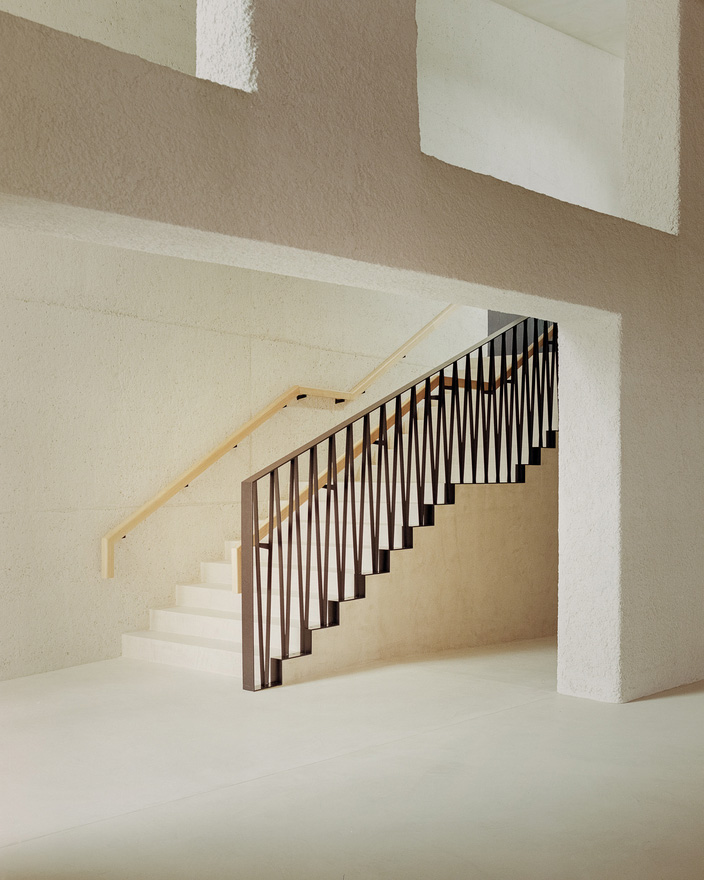
Il progetto si arricchisce dell’intervento artistico di Paul Renner le cui interpretazioni romantiche e fantasiose dell’hortus sancti augustini sono in netto contrasto con la sobrietà degli interni. Il pittoresco excursus di Renner sul patrimonio botanico dell’Abbazia si propaga lungo il rivestimento metallico della torre dell’ascensore, lì dove i visitatori scendono dal livello superiore del chiostro per dirigersi verso l’ingresso del museo.
Il progetto si confronta con l’eterogeneità delle diverse epoche architettoniche dell’Abbazia di Novacella con un approccio incisivo che orchestra abilmente lessico storico e contemporaneo in un insieme armonioso. Il disegno della sequenza ritmica degli spazi che si alternano a vuoti dalla presenza tangibile, i segni dello scorrere del tempo, e l’essenza più effimera del progetto, che solo i visitatori possono cogliere, proiettano tutto ciò che l’esperienza dell’Abbazia può offrire, nel futuro.

Pianta del piano terra.


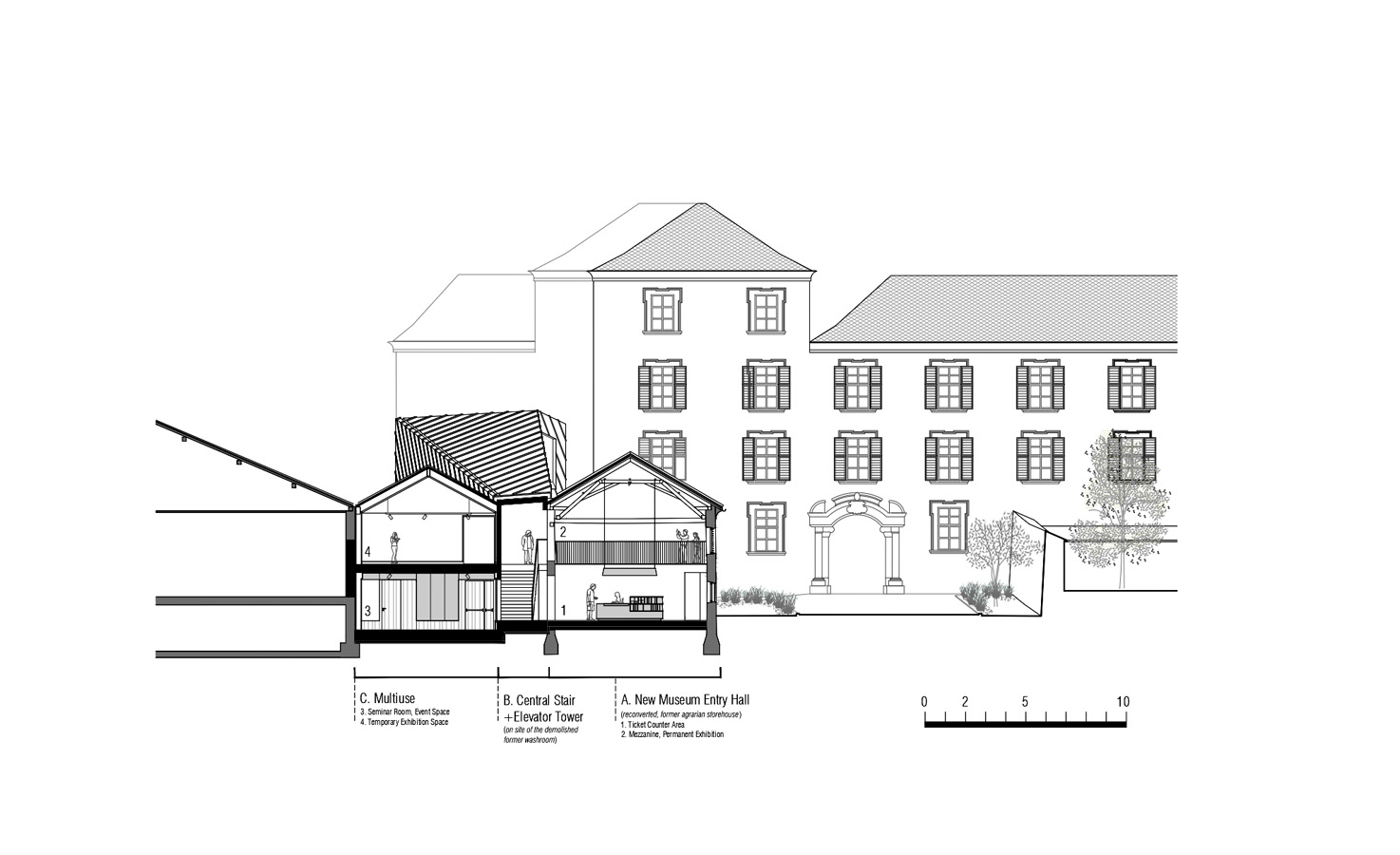
Novacella Abbey Museum Addition
Founded in 1142 and nestled within the vineyard lined basin of the Eisack valley near Bressanone (Italy), the abbey not only represents one of the most significant architectural ensembles in South Tyrol today, but also stands as a preeminent Augustinian Abbey of its time. Like a small, self-sufficient village, each building within the monastery complex played a specific role: the constituent churches, chapels, mills, workshops, wine cellars and farmhouses formed an indelible nucleus – only a portion of which has been converted into a museum.
The addition injects new functions into old buildings and rewires the relationships between the ancillary structures and the main buildings of the Abbey. From the outside, the project is only evident by the blackened, copper clad bridge that emerges from a cluster of reconstituted service buildings that connect to the main cloister at the upper level.

Photo: ©Simone Bossi.
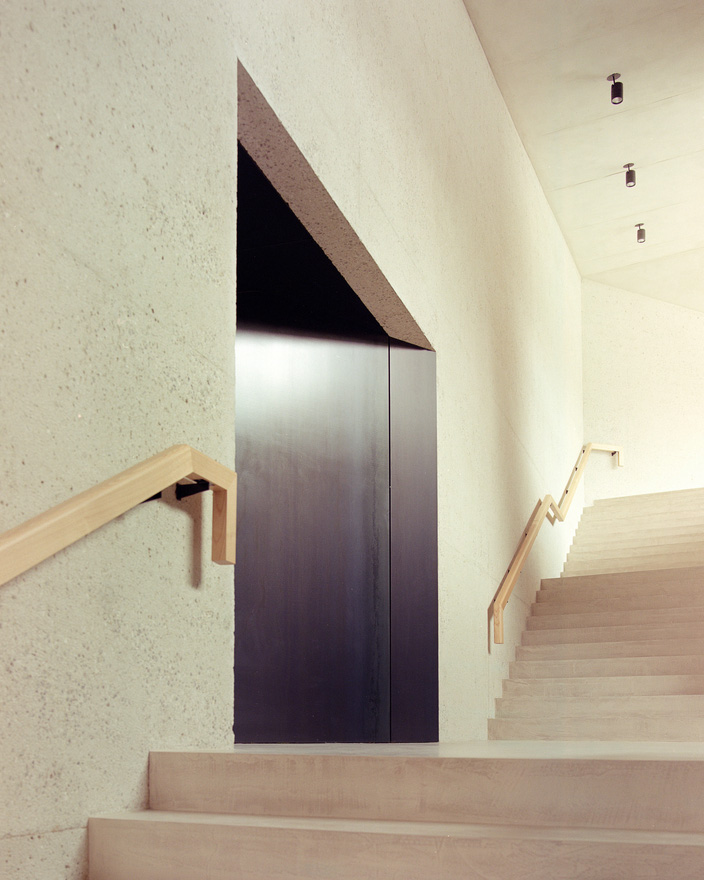

Part demolition, part renovation and part restoration, the project intervenes in three secondary, adjacent structures set against the backdrop of the 17th century wing of the main cloister. The first building is gutted to transform the agrarian storehouse into the airy, double-height space of the entry atrium with an overlooking mezzanine level. The second building on the other hand, replaces the demolished, one-story lavatorium with a sweeping stair and elevator tower that bridges over to the antique wing of the cloister. The third and final structure is renovated to house a seminar and event space at the ground level with a newly configured outdoor courtyard, and a temporary exhibition space and choir room on the upper level.
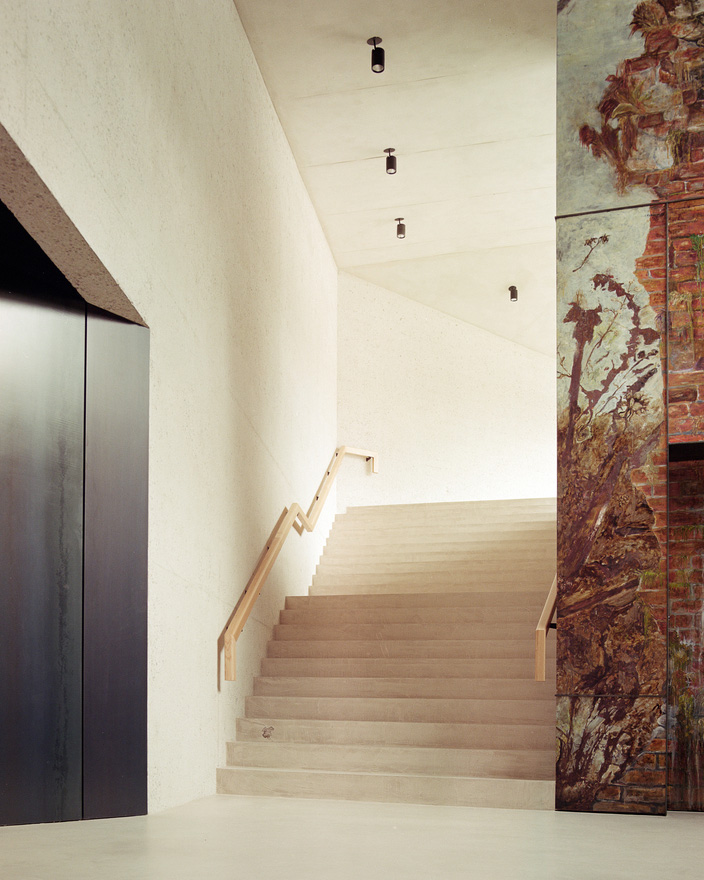
Photo: ©Simone Bossi.


The new atrium features the custom-built ticket counter, display cases and light fixtures whose articulated details of copper, wood and glass create new conversations within the newly exposed eaves of the restored, pitched wooden roof and the rough-hewn plaster work.
Visitors leave the entry hall heading outdoors to begin their tour at the Abbey cloister, the itinerary winds through the monastery, passing through the 18th century library and a newly restored 17th century frescoed room to then conclude the circuit by bridging back to the new addition on the upper level, at the top of the stairwell. In this way project is both the starting point and the point of arrival of the museum sequence. Completing the museum visit and stepping beyond the antique walls of the Abbey into the space of the new bridge, a large window provides a visual release: a foreshortened view over the rooftop of the renovated storehouse snaps back to the Sant’Angelo chapel for orientation, while also affording privileged views into the walled garden of the Abbey, and the vineyards beyond.
Bush hammered, exposed concrete walls, trowel-finished concrete floors, and thick chestnut woodwork provide a tactile backdrop to bring the spatial sequence full circle back to the cascading stairs that lead to the atrium once again. The architectural elements are held together in an atmospheric balance of subtle tones and natural materials; a sense of serenity is afforded by the measured use of a limited design palette whereby the new and old are reconciled through discrete details, be it from the parapet of the stair, the fenestration, to the finishing of the vertical and horizontal surfaces.

Photo: ©Simone Bossi.
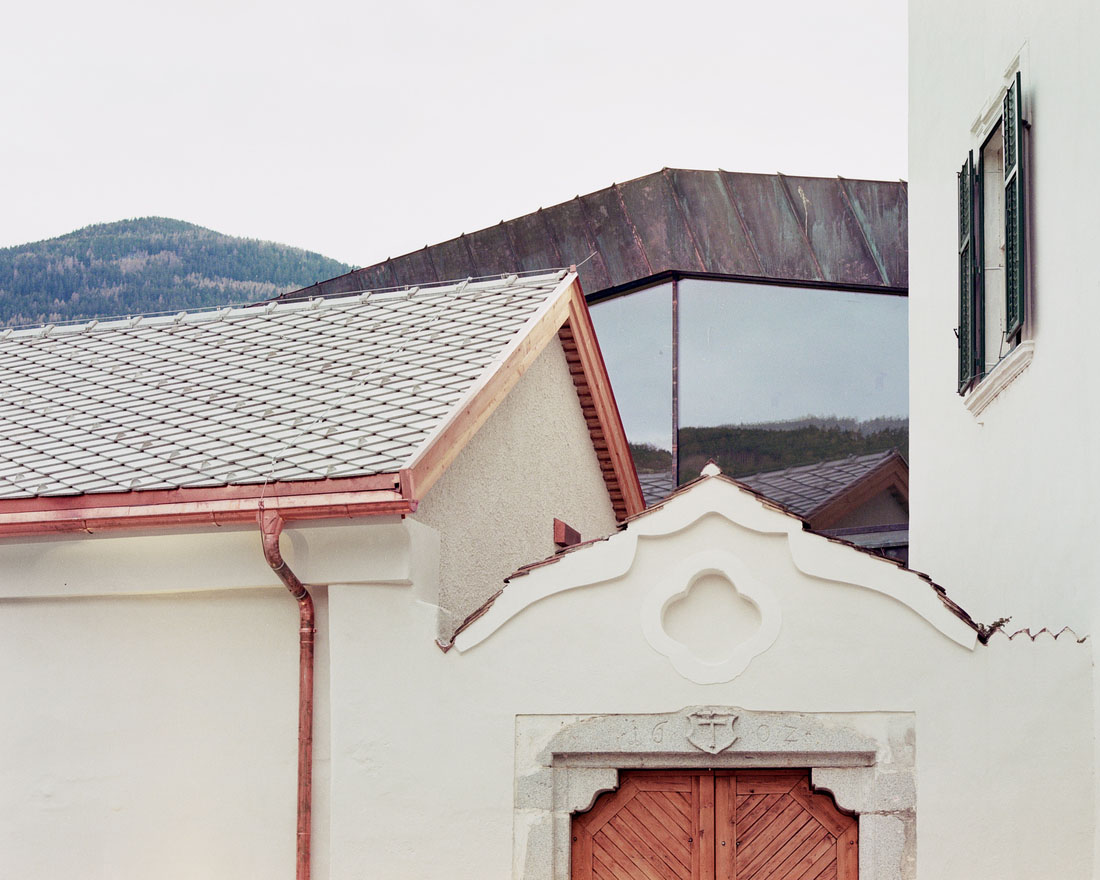
The project is accompanied by the artistic interventions of Paul Renner whose romantic and playful interpretations of the hortus sanctis augustini create a whimsical sidekick to the sobriety of the interiors. Renner’s picturesque excursus on the botanical heritage of the Abbey unfolds along the metal cladding of the elevator tower as visitors descend from the upper level of the cloister back to the entry hall.
MoDusArchitects’ work takes on the heterogeneity of the disparate architectural time periods of the Novacella Abbey with an incisive approach that melds together both historical and contemporary vocabularies in a balanced whole. The design of the sequence of spaces and their haptic, tactile messages of emptiness, time passing and the more ephemeral qualities that only the visitor can experience, carry forward all that the Abbey offers into the future.

Photo: ©Simone Bossi.







